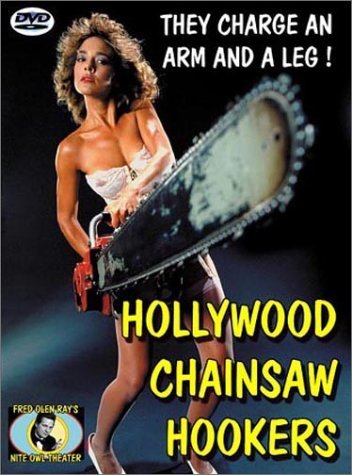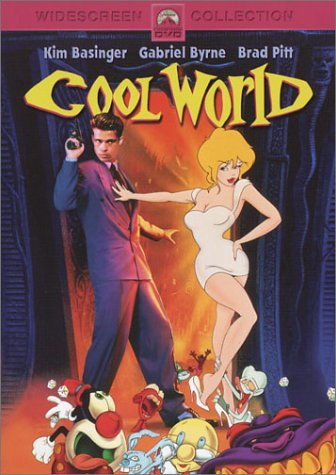 The Movie:
The Movie: 1944, in the fascist controlled northern Italian state of Salo, four fascist libertines; the Duke (Paolo Bonacelli), the Bishop (Giorgio Cataldi), the Magistrate (Umberto Paolo Quintavalle) and the President (Aldo Valletti); kidnap sixteen physically perfect teenage specimens (eight boys and eight girls). They take them to a secluded villa along with guards, servants, and four elderly prostitutes. There, with the prostitutes telling stories to get them in the mood; they slake their unholy desires on the young innocents.
The Review: As everyone who knows me, along with those who have read this blog, has undoubtedly figured out by now; my cinematic tastes tend to run to movies miles outside the mainstream. Time and again I hear the inevitable question from other people: why? Why am I into B-movies? Horror? Sexploitation? Bizarre films that defy any real attempt to describe them? Why do I feel compelled to leave the beaten path; to employ a metaphor, and seek out movies that the majority of people would avoid like the plague?
I am not too bothered by this question, because it is a good one. Indeed, it is one that I frequently ask myself. The answer I have come up with is simply this; the beaten path has very little to offer me. Oh, I do watch mainstream Hollywood flicks; they even provide something I find worthwhile every so often. But I find the majority of them to be stale, formulaic and predictable. With the very rare exception, if you plunk me down in front of any typical Hollywood film, I can tell you exactly what will happen. If it’s a horror movie, I can tell you who will die and probably even how. If it’s a romantic comedy, I can tell you who will end up with who at the end. If it’s a drama, I will probably be able to tell you, very early on and in detail, what dramatic devices they will use and how they will use them.
I approach the cinematic world with the mindset of an explorer seeking parts unknown. Sure, the well traveled routes have their wonders to offer; but they rarely vary, and one grows jaded to them quickly. However, by seeking the less traveled parts, the ones off the map, I am able to see marvels that few people see and that are all the more wonderful for that fact. There’s a sense of discovery with coming upon something that most people aren’t even aware of; and wouldn’t bother to seek out even if they were. If I didn’t have the urge to seek out something different, I never would have discovered such delights as the truly warped humor of Paul Bartel; or the dreamy, surrealistic visions of Jean Rollin; or the twisted joy of such works as
Re-animator or
Night of the Creeps. But I have had the opportunity to discover them, and my life is all the richer for it.
However, there is a very good reason why most people choose to stick to the beaten path. Namely, it is safe. There is the rare danger or unpleasant surprise; but for the most part, if you stay on the beaten path, you will know what you will encounter and how to deal with it if you do. When you head into parts unknown, you don’t have that safety net. You’re never sure what you will encounter.
Sometimes this is good; the pleasant surprises are all the more pleasant for being surprises. On the other hand, the hurdles are all the more daunting for being unfamiliar. When you find a bad movie, they are bad in ways you are unprepared to handle. Many people are amazed at how I can watch universally derided movies like
Showgirls or
Cool as Ice: the Vanilla Ice Movie and say, “eh, it wasn’t good, but it was nowhere near as bad as it could have been.” With the titles I regularly seek out and watch, I know very well of what I speak.
But the greatest danger you face when leaving the beaten path of the cinematic world, is that it is entirely possible to stumble across something that will truly scar you. With no safety net, there are no assurances of what you will or will not encounter.
Salo is one of those, fortunately, exceedingly rare films that will wound you; maybe permanently, if you have any amount of human decency in you. It is about as close and accurate a look at real-life human evil as you can get while still staying in the realm of the fictional; and true evil is something that marks everybody who has even the most tangential contact with it.
Salo is based off of the 120 Days of Sodom, an unfinished novel by the infamous Marquis de Sade. I am much more familiar with the man’s history than his work, but Donatien de Sade represented the cumulative nadir of the French aristocracy just prior to the revolution. He was vain, narcissistic, arrogant, selfish and spoiled. He was also very intelligent, and a talented writer. During his long incarcerations in prison (and outside of them, too), de Sade wrote many plays and works of fiction. Through these writings he developed a personnel philosophy that is still known today and is the source of the word he lent his name to; sadism.
Sade was a strict materialist who believed that human beings are basically cruel and selfish. The trappings of society such as morality, law, religion and virtue; only serve to cripple people and repress what they truly are. Sade argued for the endless pursuit of pleasure, any desired pleasure, without fear of punishment or consequences. Through his works he examined morality and vice, their outcomes, and their hypocrisies.
Salo is a meditation on having that kind of absolute power over another person; being able to do whatever you want to them without fear of consequences. Most importantly, Salo looks at the inevitable outcome. As history has proved time and again, absolute power is probably the most corrupting and destructive force anyone can encounter.
For obvious reasons,
Salo is a very controversial movie; and has been in the 45 years since it came out. There are many people who dismiss it as sleazy trash, and nothing more. Admittedly, that’s easy to do. You probably read my synopsis and came to that conclusion yourself. But true works of sleaze never invite controversy, particularly for as long as
Salo has. There’s some outrage, sure; there might even be some defenders. However, sleaze is quickly forgotten. So what makes
Salo different? Two things.
First of all, sleaze is always brainless. The idea isn’t to make you think; in fact, thinking is a detriment to your enjoyment of it. It is obvious that a lot of thought and effort went into the making of
Salo. The costumes, the settings, the blocking; all is very carefully and competently done. The director knew exactly what he wanted to convey, and how he was going to convey it; and it shows.
The second reason is that sleaze is intended for enjoyment. Oftentimes rather sickening, unhealthy enjoyment it’s true; but the whole principle behind sleaze is that somebody finds it pleasurable. Director Pier Paolo Pasolini went out of his way to ensure that nobody could find
Salo at all pleasant. (For those of you who want to write me and say that that’s not true, you find it enjoyable; let me save you time by giving you my response in advance: you scare me, get help.)
There is plentiful nudity on display, including some actresses I would take great pleasure in ogling were this any other movie; but the circumstances strip any and every amount of eroticism out of their nudity. Likewise, there’s some really graphic sex. However, with maybe one or two exceptions, sex in this movie is portrayed as painful, humiliating and/or the excuse for truly horrible punishments inflicted on the participants. You do not watch these sex scenes for fun; in fact, they’re enough to put you off sex.
Watching this movie as an artist and a former psych student, I got the impression of an artist using his art to purge his inner demons.
Salo is, simply, about evil and its consequences. Our four villains are very human, I could expect to encounter them walking down the street, though I’m praying I never will. They have quirks (one’s always telling really bad jokes for example). Their methods confirm to how all the worst atrocities progressed; they start out fairly small. Gradually though, as the villains truly begin to appreciate the leeway they have with what they can get away with, their actions become more and more vile. I can remember one scene where I was gagging and praying for it to be over. It passed, but when the next round of atrocities came about, I was praying for them to return to it.
But even then, the villains never become the cackling, mustache twirling stereotypes we think of when we think of villains. They remain disconcertingly human. In fact, we are made to participate in the final atrocity; where they take it in turns sitting at a window with binoculars and watch while the others torture their prisoners to death. Our view of the proceedings is entirely through said binoculars.
The prisoners themselves become complicit in their captivity. As time passes they become more and more passive, laughing at the villains’ awful jokes and obeying their orders without question. They even start informing on each other, in the hopes that they will be spared the worst.
Then there’s the final scene, which I think encapsulates the movie perfectly: two guards; young, handsome, pleasant seeming young men; dancing and asking about each others’ families in the same room where their boss is watching atrocities through binoculars. It is surreal, but it is also a very accurate portrayal of people in this kind of situation.
I am a little torn about what I want to say to end this review. On the one hand,
Salo is a good movie. It is very well done, and it is about as accurate a portrayal of true human evil as I have ever seen in a movie. I can even say truthfully, much to my surprise, that I do not regret having seen it.
On the other hand,
Salo is not at all a pleasant movie and I would not recommend it to anybody. It is a true ordeal to sit through, and it doesn’t do anything to improve one’s view of humanity. Of course, there will be a few of you who will read this and, despite my warnings, you will feel the need to experience it for yourself. I will not try to dissuade you, I understand what you are feeling all too well. However, I will leave this one last caution.
Salo is not a movie you see on a whim. If you do decide to seek it out, tread carefully for here truly be monsters.



